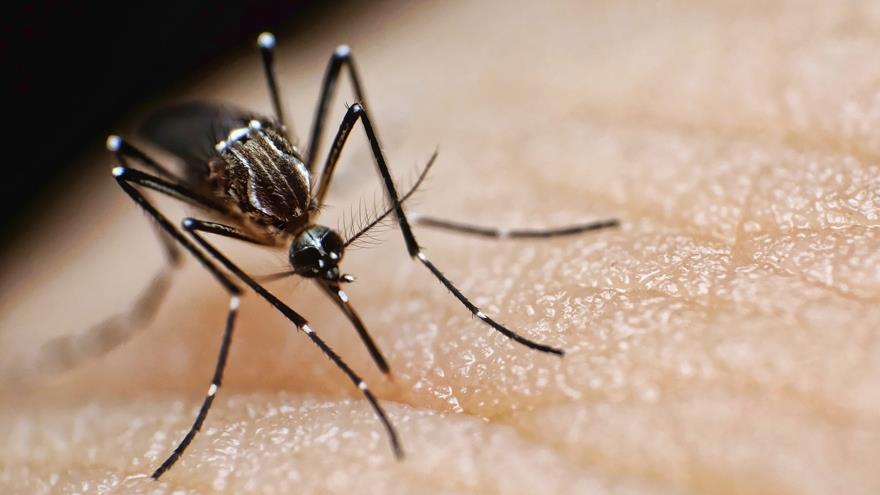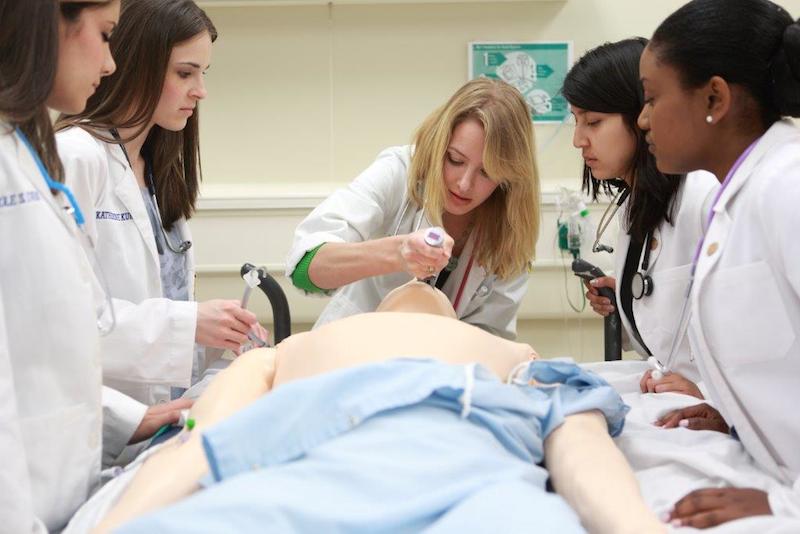Drexel College of Medicine Transforms MD Program

- Mosquitoes' Bloodsucking Tubes Could Enable High-Definition 3D Printing
- Drexel Selects New, World-Class Life Sciences Building at 3201 Cuthbert Street for Medical Research Operations
- Breakthrough on Gene Therapy for Hereditary Spastic Paraplegia
- Drexel Environmental Collaboratory Releases Cross-Sector Findings on Severe Weather Recovery Challenges

Drexel University College of Medicine has unveiled an expansive set of changes to its MD curriculum that are intended to better prepare physicians for a constantly evolving health care environment.
Beginning in August 2017, the College is doing away with its two-track system and introducing a single program called “Foundations and Frontiers.” The curriculum is designed to train physicians who possess the many enduring qualities essential to clinical excellence, as well as skills needed in the 21st century.
From year one, students will spend fewer hours in lectures and more time in interdisciplinary classes learning to solve problems in teams, rather than memorize facts. They will also have the opportunity to benefit from collaborations with other colleges within Drexel to earn concentrations or certificates in areas such as population health, ethics or informatics.
“These changes come at time when there is a real evolution in medical practice, including a shift in care from the hospital to the outpatient setting, an increasingly diverse patient population, a growing rate of chronic illness, a need to work in multidisciplinary teams and greater expectations for fiscal accountability,” said Donna Russo, PhD, senior associate dean for curriculum in the College of Medicine.
The shifting medical landscape required a transformation in pedagogy, according to Valerie Weber, MD, vice dean for educational affairs in the College of Medicine. Drexel is currently educating 1 in 76 medical students in the United States, so Weber believes the College has an important responsibility to ensure the next generation of physicians are competent, compassionate and ready to face new challenges in medicine.
“Medical knowledge is changing rapidly. So, if we just say, ‘We are going to teach you everything you need to know,’ in five years, the facts will be different,” Weber said. “Instead, we are giving students models of how the body works and problem-solving skills.”
In that vein, the new curriculum caters to a tech-savvy generation of learners, who are able to quickly search for information on their smartphones and see less value in watching professors flip through PowerPoint slides.
The number of courses Drexel medical students are required to take at any one time during their first year is being reduced from around nine to four. Rather than taking separate courses in genetics, biochemistry and cell biology, for instance, they will take “Molecules to Organs,” a seven-week course that integrates a variety of disciplines. Much of the learning will take place outside of the classroom through online learning and independent assignments. Class time will be used, in large part, for applying knowledge to clinical cases as part of peer teams.
This self-directed learning model will ultimately produce more thoughtful doctors, who are able to work on inter-professional teams and think critically even when they inevitably do not have all the answers, Weber said.
“If you are in a clinical situation, you need to be able assess your gap in knowledge. You first ask what knowledge you need to solve the problem, then decide where to access that information and how it applies to your particular patient,” she said. “We need to teach future physicians that continuous cycle of quality improvement.”
In an effort to graduate more well-rounded physicians, the new MD program also incorporates four, one-week blocks when students will be immersed in electives from other Drexel colleges and schools. Some possible topics include health informatics, population health, patient safety, biotechnology, health care systems and financing, and principles of translational research.
During their fourth year, students may choose advanced studies in one of these areas or to conduct a scholarly project under the direction of a faculty member. Continuing the College of Medicine’s longstanding commitment to community service, students will also participate in a practicum experience throughout their first and second years that will take them into health clinics in Philadelphia neighborhoods.
Another update to Drexel’s medical program is the addition of Learning Societies — small, supportive environments for medical students that have been adopted by medical schools throughout the country. College of Medicine students are divided into one of four societies led by a faculty adviser, where they will remain for four years. The societies offer community service projects, student wellness activities and social events.
The new curriculum is the result of more than two years of input from current students, faculty, alumni and national medical education experts. The changes are part of a growing trend in medical education, to lessen lecture time, increase collaborative learning and incorporate technology. However, Drexel’s program is attractive to a particular type of student, Weber said.
“Every medical school has a different mission and is looking for different people,” she added. “Drexel is looking for students who are going to be kind, compassionate clinicians who have demonstrated empathy and a commitment to serve.”
In This Article
Contact
Drexel News is produced by
University Marketing and Communications.